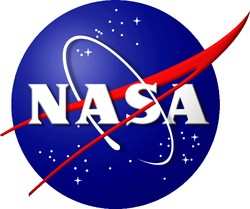Thu, Jul 05, 2012
NASA Space Tech Program Selects 14 Programs For Flights On Re-Usable Suborbital Spacecraft
NASA's Space Technology Program has selected 14 technologies for development and demonstration on commercial reusable suborbital launch vehicles. The selected proposals offer innovative cutting-edge ideas and approaches for technology in areas including active thermal management, advanced avionics, pinpoint landing and advanced in-space propulsion. They also address many of the high-priority technology needs identified in the recent National Research Council's Space Technology Roadmaps and Priorities report. These payloads will help NASA advance technology development needed to enable NASA's current and future missions in exploration, science and space operations.

"These technology payloads will have the opportunity to be tested on commercial suborbital flights, sponsored by NASA, that fly up to and near the boundary of space," said Michael Gazarik, Director of NASA's Space Technology Program at NASA Headquarters in Washington. "The flights will ensure the technology fidelity before they're put to work in operational systems in the harsh environment of space."
Proposals for this solicitation were received from NASA centers and other government agencies, federally funded research and development centers, educational institutions, industry, and non-profit organizations. NASA's Flight Opportunities Program sponsored this solicitation in collaboration with NASA's Game Changing Development Program.
Following their development, selected technologies will be made available to the Flight Opportunities Program for pairing with appropriate suborbital reusable launch service provider flights. The Flight Opportunities Program provides opportunities for technologies to be demonstrated in relevant environments, while fostering the development of commercial reusable transportation to near space.
Proposals selected for contract negotiations are:
- "Demonstration of Vertically Aligned Carbon Nano-tubes for Earth Climate Remote Sensing," Howard Todd Smith, Johns Hopkins University, Baltimore, MD.
- "Facility for Microgravity Research and Submicroradian Stabilization using sRLVs," Scott Green, Controlled Dynamics, Inc., Huntington Beach, CA.
- "Enhanced Thermal Switch," Douglas Mehoke, Johns Hopkins University Applied Physics Laboratory, Laurel, MD.
- "Autonomous Flight Manager for Human-in-the-Loop Immersive Simulation and Flight Test of Terrestrial Rockets," Kevin Duda, Draper Laboratory, Inc., Cambridge, MA.
- "Armadillo Launch Vehicle Attitude Knowledge Capability Enhancement Using Advanced Micro Sun Sensor," Sohrab Mobasser, Jet Propulsion Laboratory (JPL), Pasadena, CA.
- "Demonstration of Variable Radiator," Richard Kurwitz, Texas A&M University, College Station, TX.
- "Dynamic Microscopy System," John Vellinger, Techshot Inc., Greenville, IN.
- "Design and Development of a Micro Satellite Attitude Control System," Manoranjan Majji, University at Buffalo, Buffalo, NY.
- "Suborbital Test of a Robotics-Based Method for In-Orbit Identification of Spacecraft Inertia Properties," Ou Ma, New Mexico State University, Las Cruces, NM
- "Fuel Optimal Large Divert Guidance for Planetary Pinpoint Landing," Behcet Acikmese, JPL
- "SwRI Solar Instrument Pointing Platform," Craig DeForest, Southwest Research Institute, San Antonio, TX.
- "Saturated Fluid Pistonless Pump Technology Demonstrator," Ryan Starkey, University of Colorado, Boulder, CO.
- "Electric-hydrodynamic Control of Two-Phase Heat Transfer in Microgravity," Boris Khusid, New Jersey Institute of Technology, University Heights, NJ.
- "An FPGA-based, Radiation Tolerant, Reconfigurable Computer System with Real Time Fault Detection, Avoidance, and Repair," Brock LaMeres, Montana State University, Bozeman, MT.
Awards will range from $125,000 to $500,000 with a total NASA investment of approximately $3.5 million. Payloads are expected to fly in 2013 and 2014.
More News
Aero Linx: The American Society of Aerospace Medicine Specialists (ASAMS) The Society is a non-profit organization created to serve as a voice for and represent the professional ne>[...]
Class C Service This service provides, in addition to basic radar service, approved separation between IFR and VFR aircraft, and sequencing of VFR aircraft, and sequencing of VFR a>[...]
Have A Story That NEEDS To Be Featured On Aero-News? Here’s How To Submit A Story To Our Team Some of the greatest new stories ANN has ever covered have been submitted by our>[...]
Also: ERAU Uses UAVs, P550 Group 2 UAS, Starship’s Florida Launches, NASA Missions Chopped The Air Force has put out a call to commission a one-to-one copy of the Iranian-des>[...]
Classic Klyde Morris From 11.07.16 (and Remembering Bob...) FMI: www.klydemorris.com>[...]
 ANN's Daily Aero-Linx (08.27.25)
ANN's Daily Aero-Linx (08.27.25) ANN's Daily Aero-Term (08.27.25): Class C Service
ANN's Daily Aero-Term (08.27.25): Class C Service ANN FAQ: Submit a News Story!
ANN FAQ: Submit a News Story! Airborne-NextGen 08.26.25: Iran UAV Knockoffs, X-37B Spaceplane, Army Training
Airborne-NextGen 08.26.25: Iran UAV Knockoffs, X-37B Spaceplane, Army Training Classic Klyde Morris (08.25.25)
Classic Klyde Morris (08.25.25)



